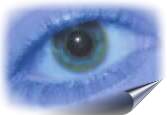 |
The Euro coins from Andorra
Andorra joined the euro area in 2002. But it lasted until 15 January 2015 to get their own design.
El Principat d'Andorra s'havia utilitzat l'euro unilateralment des de la introducció
de la moneda als seus països veïns, Espanya i França. A partir de l'any 2011, es va
utilitzar l'euro només »de facto«, però no »de iure«.
El 30 de juny de 2011, es va signar un acord monetari entre la UE i Andorra, que va
entrar en vigor l'1 d'abril de 2012. Per tant, l'euro es va convertir en la moneda
oficial del Principat.
Va ser només el 20 de novembre de 2013, les activitats previstes en els decrets acord
monetari es van adoptar per aplicar les normes europees del Govern d'Andorra.
Fins al 29 de desembre de 2014, es van introduir les monedes en euros andorrans, que estan disponibles a partir 15 gener 2015.
 |
 |
 |
Motive: Pyrenean chamois and bearded vultures |
On the custom of Ruben da Silva coins 1-5 cents a Pyrenean chamois and a bearded vulture are shown. |
 |
 |
 |
Motive: Church of Santa Coloma |
The 10, 20 and 50-cent coins the church of Santa Coloma is mapped to the design of Moles Disseny and Les Escaldes. |
 |
 |
Motive: Casa de la Vall |
Motive: Coat of arms of Andorra |
The presentation of the Casa de la Vall on the 1-euro coins was modified from the competition design by Jordi Puy. |
The coat of arms shown on the 2-euro coin shows Andorra miter and crosier of the Bishop of Urgell, Co-Princes of Andorra, three red piles the coat of arms of Foix and four of Catalonia and the two cows of the Counts of Béarn. |
Embossing place
The Andorrarian coins are manufactured in the embossing place in Madrid (Spain).
... back
|
|
![]()


![]()

